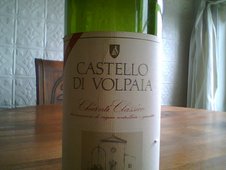
A week back, I saw a wine colleague and asked if he was going to the coming Wine Guild Media vertical tasting of 40 years of
Dr. Konstantin Frank Riesling and he waved the notion off, saying "Nah! I don't like that watery upstate stuff."
I don't understand this sort of attitude. If you don't like New York State Riesling, fine. But to pass up a chance to taste the wares of a maker as historic as Frank from 2006 all the way back to 1964—that's an opportunity that would be foolish to dismiss.
I always had a fine respect and fondness for Frank's products. The wines do not rank with the great Mosel and Alsatian wines, but they are dependable, refreshing and very enjoyable. A good bargain, too. Frank was an early evangelist in America for the northern European varietals, insisting that East Coast wine need not be insipid brews derived from hybrids. The wine industry in New York, not to mention the whole country, owe him a debt of gratitude.
In attendance at the tasting was the good doctor's grandson Fred, a tall, stolid, friendly man. His presence lent to the event an air of moment. The vintages on hand were: 2006, 2005, every year from 2003 to 1998, 1996, 1995, 1988, 1987, 1985 and finally 1964. Also available were reserve wines from 2005 and 2001.
The tasting began with the lemon, good acidity and somewhat one-dimensional appeals of the 2006. The 2005 reserve was noticeably richer and fuller. By 2003, a touch of the diesel notes you see in older Rieslings began to show up. In 2002, this quality was even more in evidence, with the wine broadening and the fruit notes smoothing out.
The palates of the '90s wines continued to widen, grow bigger and offer mellower fruit. Often, the provocative, fragrant noses had more to offer than the juice itself. I found the 1995 particularly rewarding, with a very subtle, softly honeyed nose and full, rich flavor with good acidity.
I wish I could say the '80s delivered even more. But I'm afraid, with 1988, the wines became more
interesting, and less enjoyable. The drinkers who don't favor this sort of wine complained early on that the wines grew progressively oxidized. (Folks who liked the wines described it as the diesel quality mentioned earlier.) By the '80s, I had to admit that oxidization had had its way. The 1988 had a strange carmel-like nose, and had an unpleasant acrid taste. 1987 was much better, but with 1985 the acrid taste was back.
And the 1964, which was the color of burnt umber? I'm sorry, but honestly it was little more than a very educational bottle of vinegar. If I was more charitable, I'd say it was sherry-like. But sherry isn't a trial to drink, and this way. I came away from the tasting still fond of the Frank rieslings, but not convinced they can age as well or as long as their best European counterparts.
At the table we'd tried further wines at the table, to go with our lovely (and gigantic) striped bass. Best were the sparkling Chateau Frank Blanc de Noirs and Blanc de Blancs, and the Rkatsiteli, made from a rare varietal. Its acidity was nicely moderated by mild, understated fruit, including mellow banana.










